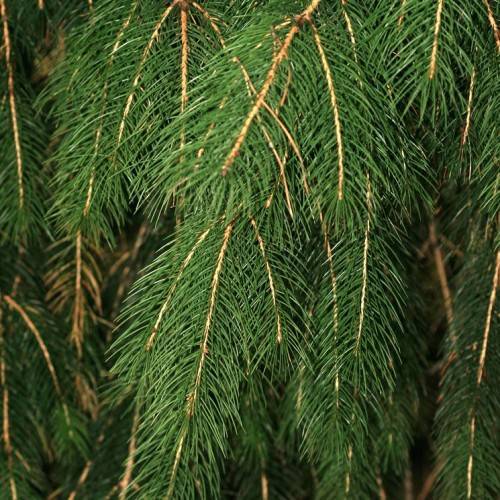
morinda spruce
Picea smithiana
Cycle:
Perennial
Watering:
Average
Hardiness Zone:
7 - 8
Flowers:
Flowers
Sun:
Full sun
Cones:
Yes
Leaf:
Yes
Growth Rate:
Low
Maintenance:
Low
Drought Tolerant:
Yes
Care Level:
Medium
watering
Morinda spruce (Picea smithiana) typically requires regular watering. Water the plant thoroughly whenever the top 1” to 2” (2.5 to 5 cm) of potting soil in the container is dry. In warm temperatures, it is best to check the soil after a few days and water as needed. During cooler weather, the soil can stay moist for several weeks. If your Morinda spruce (Picea smithiana) is growing in the ground, water it regularly, especially during summer. Until the plant is established, about every 7 to 10 days is good. During hot weather, water twice a week. Established plants can be watered less often. Avoid overwatering, as it can cause root rot.
sunlight
Morinda spruce prefers bright, direct sunlight, but can tolerate light shade. It should get at least 4-5 hours of direct sun daily, with more in the morning than in the afternoon. The best time for sunlight for Morinda spruce is from 10 AM to 4 PM when the sun is at its brightest. Morinda spruce should be kept in an area that does not receive too much shade, but some relief from direct sunlight can be beneficial to its overall health.
pruning
Morinda spruce should be pruned in early spring, once new growth begins to emerge. Pruning should not be done excessively, as this species is relatively slow-growing and can easily succumb to over pruning. Start by removing any dead or diseased branches, which can be identified by their discoloration or lack of foliage. Next, thin out the canopy to improve light penetration and airflow throughout the entire tree. Remove any competing branches which are crossing or growing very closely together, and any branches which are growing excessively long and crowding out others. Lastly, if necessary, prune to create a desired shape or size. Be sure to prune carefully and evenly to maintain a symmetrical look.
